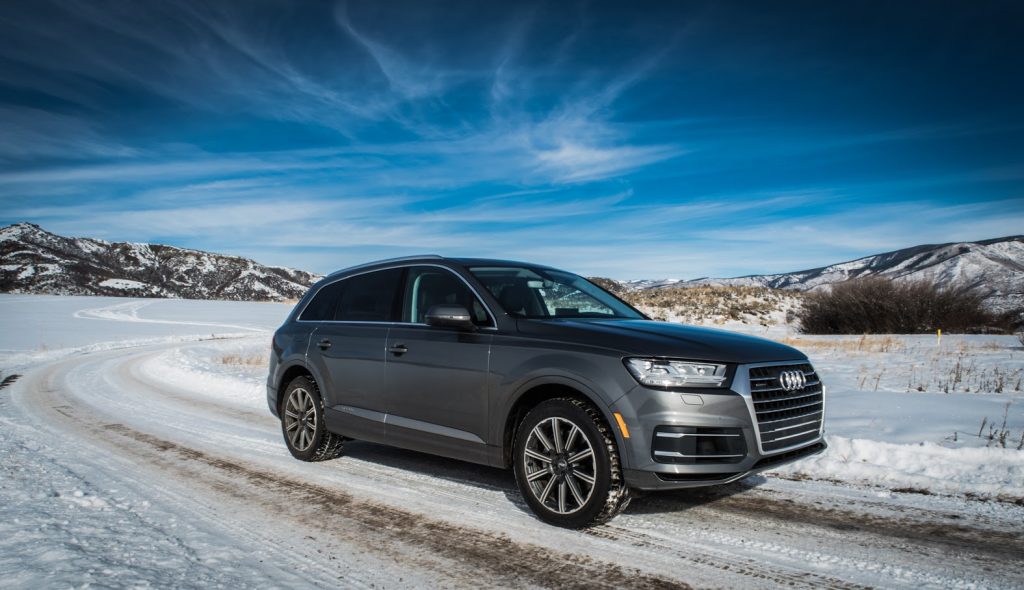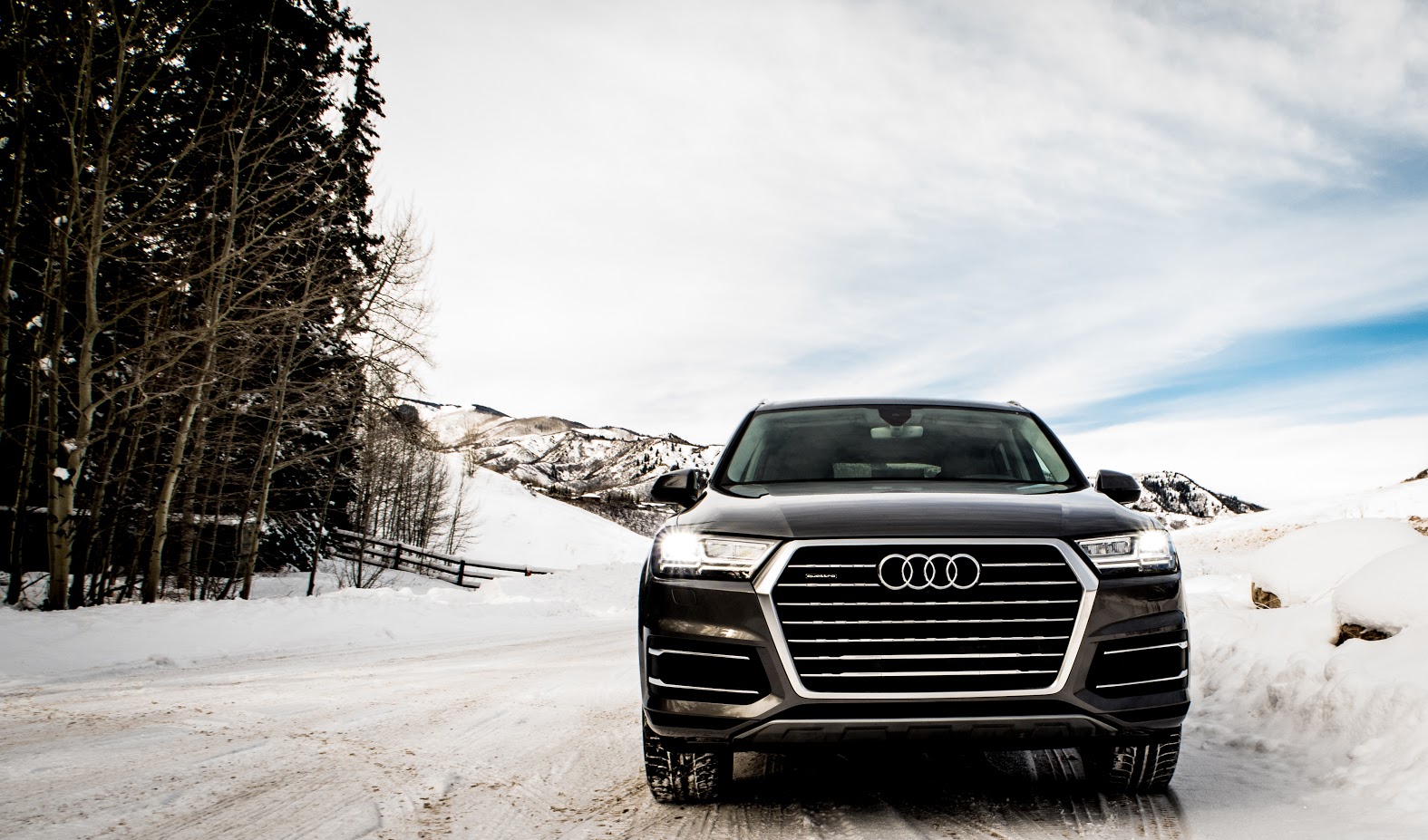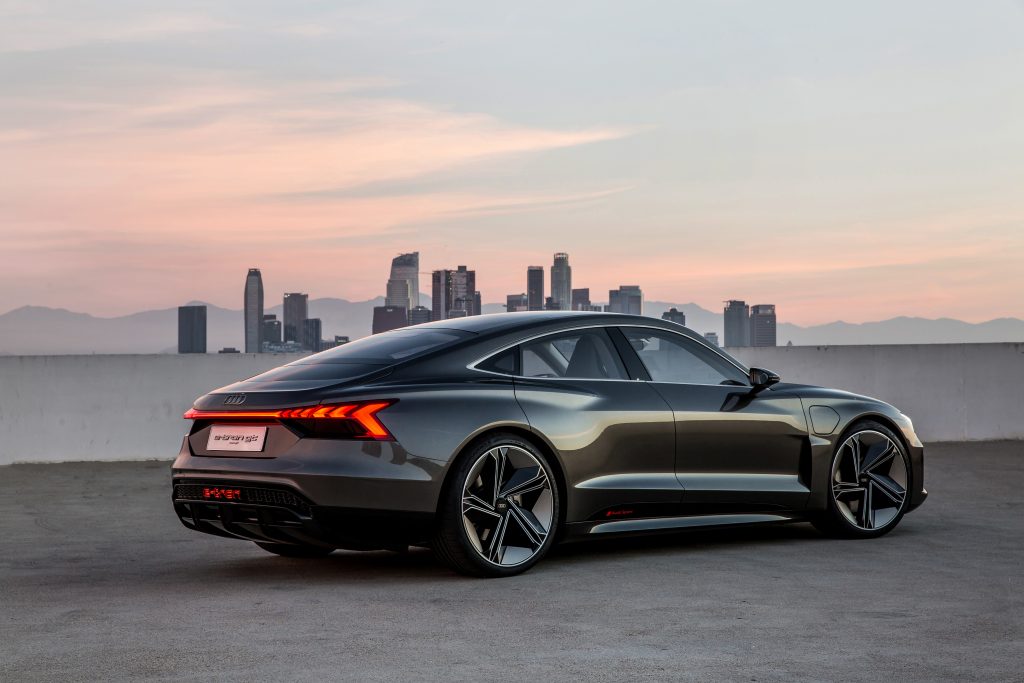Test Drive: 2016 Audi Q7
Rolling through Aspen in Audi’s most high-tech crossover

by Michael Frank
Audi‘s latest Q7, its seven-passenger crossover, is a much-improved driver’s car. This is chiefly due to weight—while the outgoing seven-passenger Q7 could weigh up to 5,412 pounds, the new one is down to 4,938 pounds. A future-promised turbocharged four-cylinder (vs the 3.0-liter, 333hp V-6 with that we tested in Aspen recently) should reduce weight even more.

The improved driver experience, though, is also down to stiffness. To hack off the pounds, Audi significantly increased the amount of high-strength steel and aluminum in the space-frame chassis and that not only amplifies the safety of what is, chiefly, a family car, but makes the newest, biggest Audi tauter, quicker to corner and far more connected to the road. Even the doors are entirely made of aluminum, cutting 53 pounds.
But the most likely reason you’ll want the $54,800 Q7 has more to do with how it’s connected, tethered and fused with both the digital grid and also the grids of pavement that it plies. This is, far more than any vehicle on the road that isn’t being driven by robots, a car that’s crammed with every conceivable tech bauble.

For instance, there is a mousepad ahead of the eight-speed Tiptronic shift lever that mirrors everything any kid knows how to do on a smartphone. It takes just moments to learn how to use. Stare at a map on the central display and zoom in or out by pinching or spreading your thumb and forefinger. Then tap on a location you’re interested in knowing more about, and a highly detailed Google Maps-fed menu can ID information about the POI; another window also opens to let you simply navigate to the location. This—in massive comparison to so many other attempts at in-car controls that fail to mirror the gestures any three-year-old has learned on a smartphone—is the most highly evolved form of in-car navigation we’ve witnessed. If you know how to pinch, swipe, and tap on a screen, you can use it.
Why hasn’t this always been the default carmakers have chosen? One of the answers to that question has had to do with supporting infrastructure. In the Q7 you get both a central eight-inch TFT display and a massive 12.3-inch gauge cluster ahead of the driver that’s actually a secondary screen that can be reconfigured in its entirety as a map (courtesy of Google Earth); as standard tachometer and speedometer, and in several other arrays including turn-by-turn mapping, a performance mode, and so forth.

But to feed you all of this information at a rate that looks slick rather than pixelated, the Q7 gets dual Nvidia Tegra-3 quad core processors (akin to ultra-fast gaming laptops) that refresh at 60 frames-per-second, so the screens are ultra-clean and clear. You haven’t seen this level of execution in cars before—not because of a lack of horsepower under the hood, but because no carmaker invested in the silicon infrastructure required to make so much instrumentation sing at its full potential.
There is plenty more entertainment in the rest of the cabin as well. Rearmost quarters are a bit tight if you’re not a kid, but folding the aft row forward for exit and entry is seamless and assisted by electronic nannies. And at night, a combination of ambient LED lighting circuits the cabin like a virtual, electronic chair rail; it’s paired with a huge panoramic glass roof. The execution of the both elements, in combination with lit red and white accents for controls like window levers, vents and door-releases highlights the “Audi-ness” of the space—the message is one of excellence rather than of luxury or ostentation.

As we’ve said, there’s still more technical prowess at hand. We don’t just mean the latest generation of quattro that tiptoed us both through a foot of fresh powder as well as across an ice-covered access to a trailhead. Handy, too, is the optional air suspension that can raise the Q7 up to 9.6 inches in off-road mode. These are nice, but Audi’s gone well beyond its handling and 4×4 roots with the newest Q7.
For instance, it can stop itself from 35mph with zero driver input (a trait now shared by rival brands such as Volvo). In addition, it can use mapping to read stoplights ahead on your route, as well as speed limit signs, and will regulate the speed of the car not just according to the preset speed, but according to live traffic monitoring. And your Q7 can share the workload in traffic with something called “congestion assist,” a function that allows the car to keep pace in stop-and-go commuter crawl with almost zero input from the driver. It detects pedestrians and cyclists whizzing beside the car—warning you not to open a door into them. The Q7 will even prevent you merging in city traffic if your Audi can’t quite fit the opening.

Apple’s CarPlay is well-integrated—drivers can simply pair an i-device and will see a slimmed-down menu of options that run directly from your iPhone. This is especially good for using streaming services, but it also let you use voice controls to answer texts and hear them read aloud, all while keeping your eyes on the road.
This new Q7 is a decidedly massive improvement and Audi’s clearly not done. By mid-2016 we’ll see an e-Tron Q7, a plug-in hybrid version with a 2.0-liter four mated to an electric motor with about 30 miles of EV-only range. What we may not see (because Audi and VW are under the same parent company) is either the diesel-hybrid version of the Q7 or any diesel at all. The challenge: cleaning up a now very tarnished image, thanks to Volkswagen lying about its cars’ diesel emissions. Whether Audi can manage a fix for its own diesels—as well as they have managed to make the Q7 crossover their very best—remains to be seen.
Trackpad image courtesy of Audi, all other images by Michael Frank












